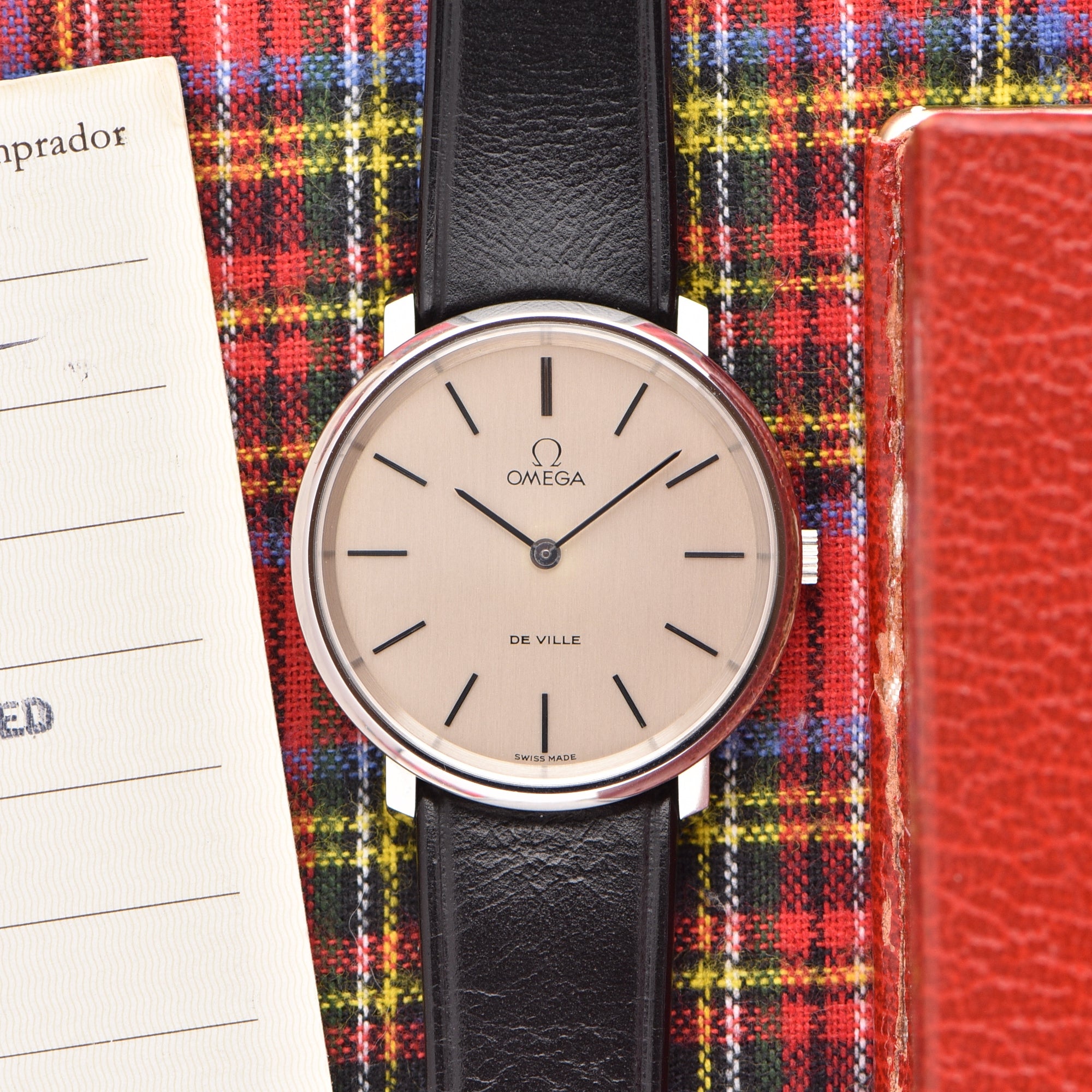

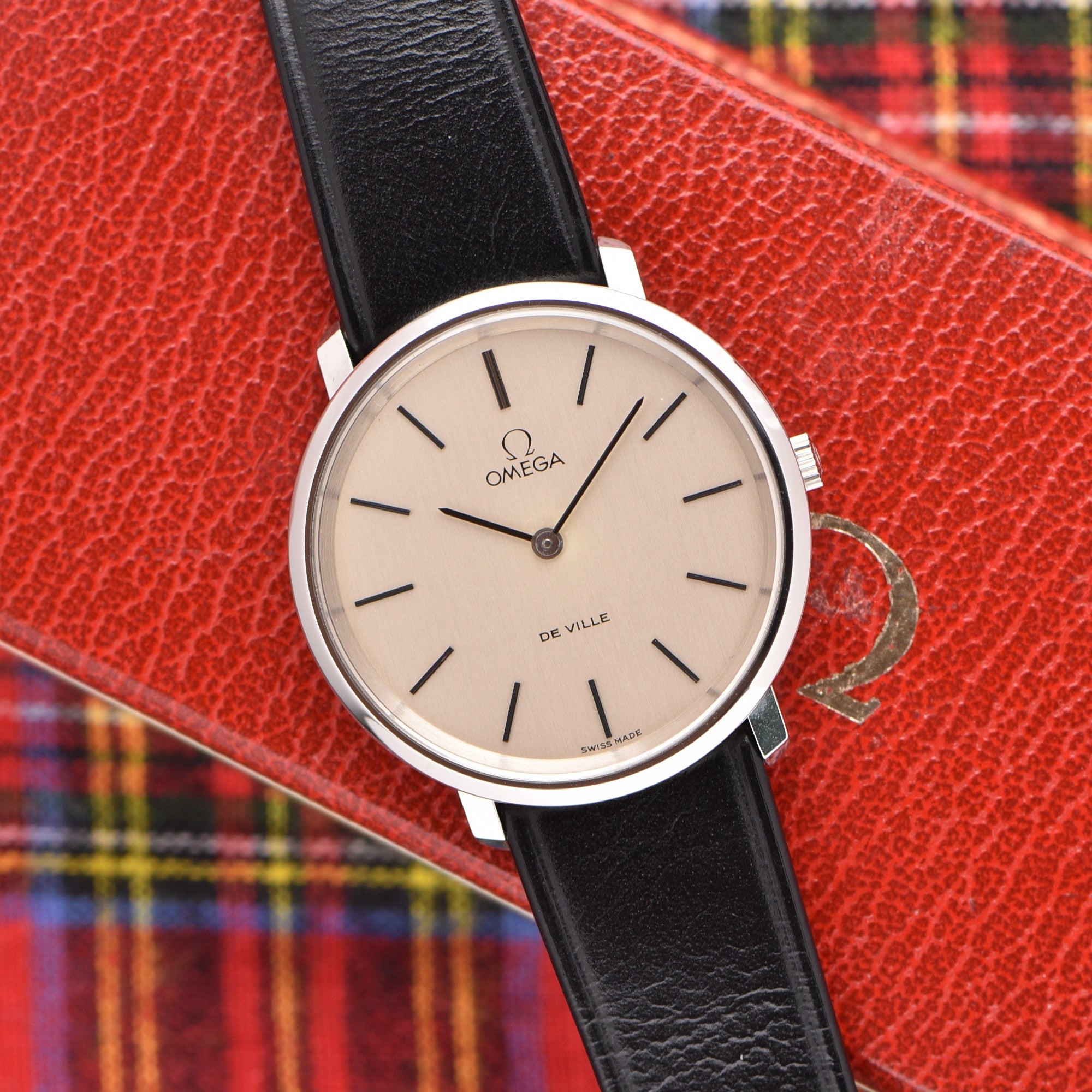
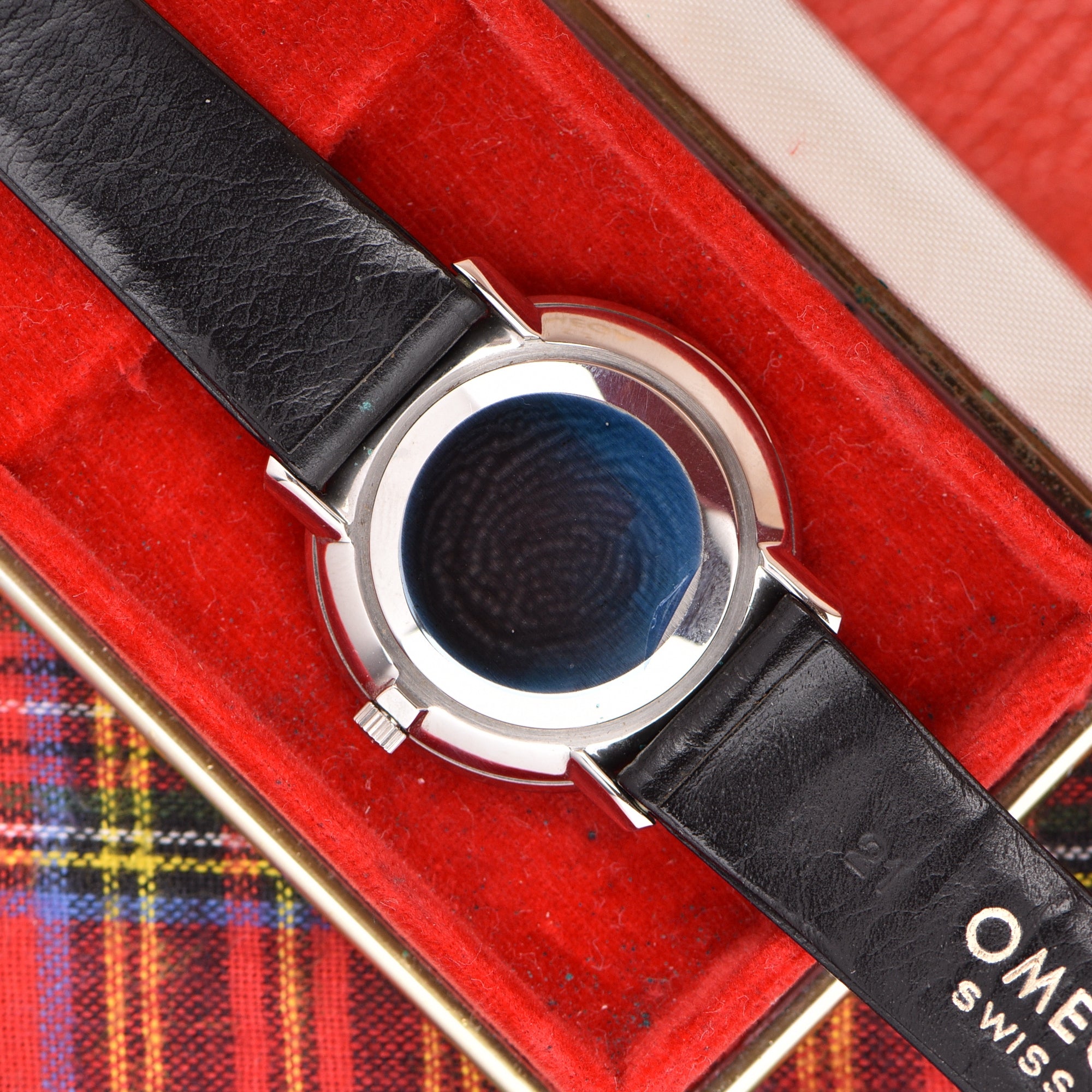
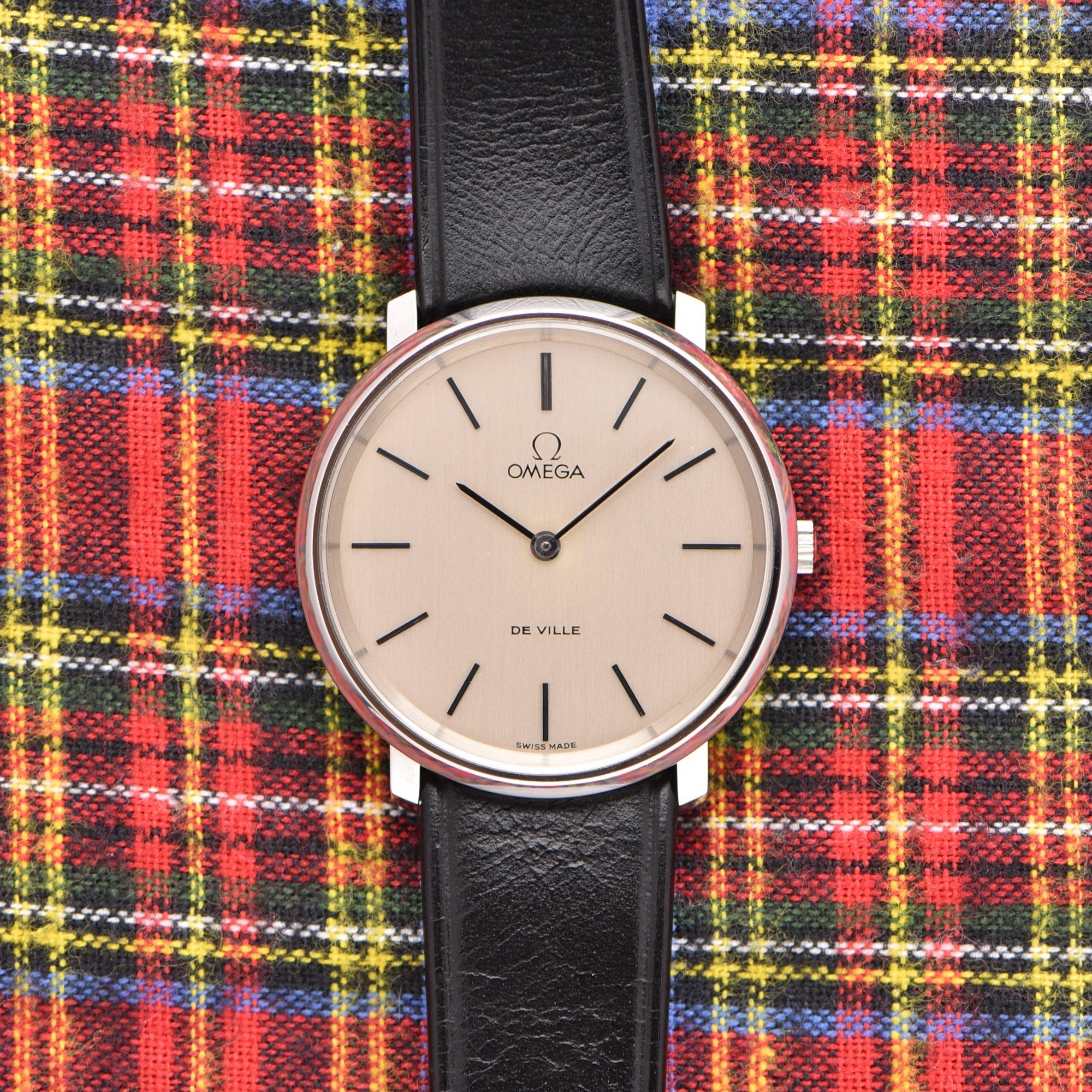
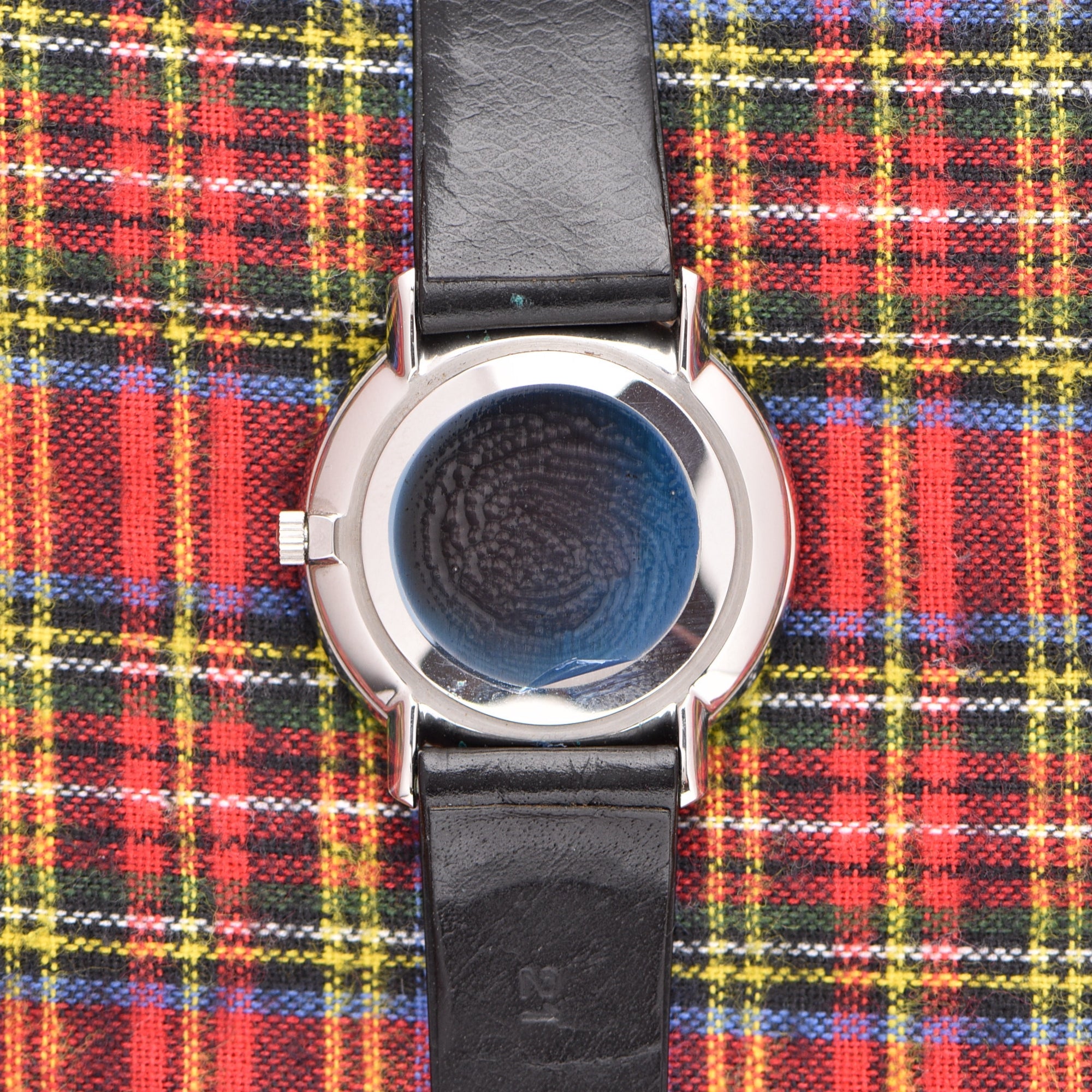
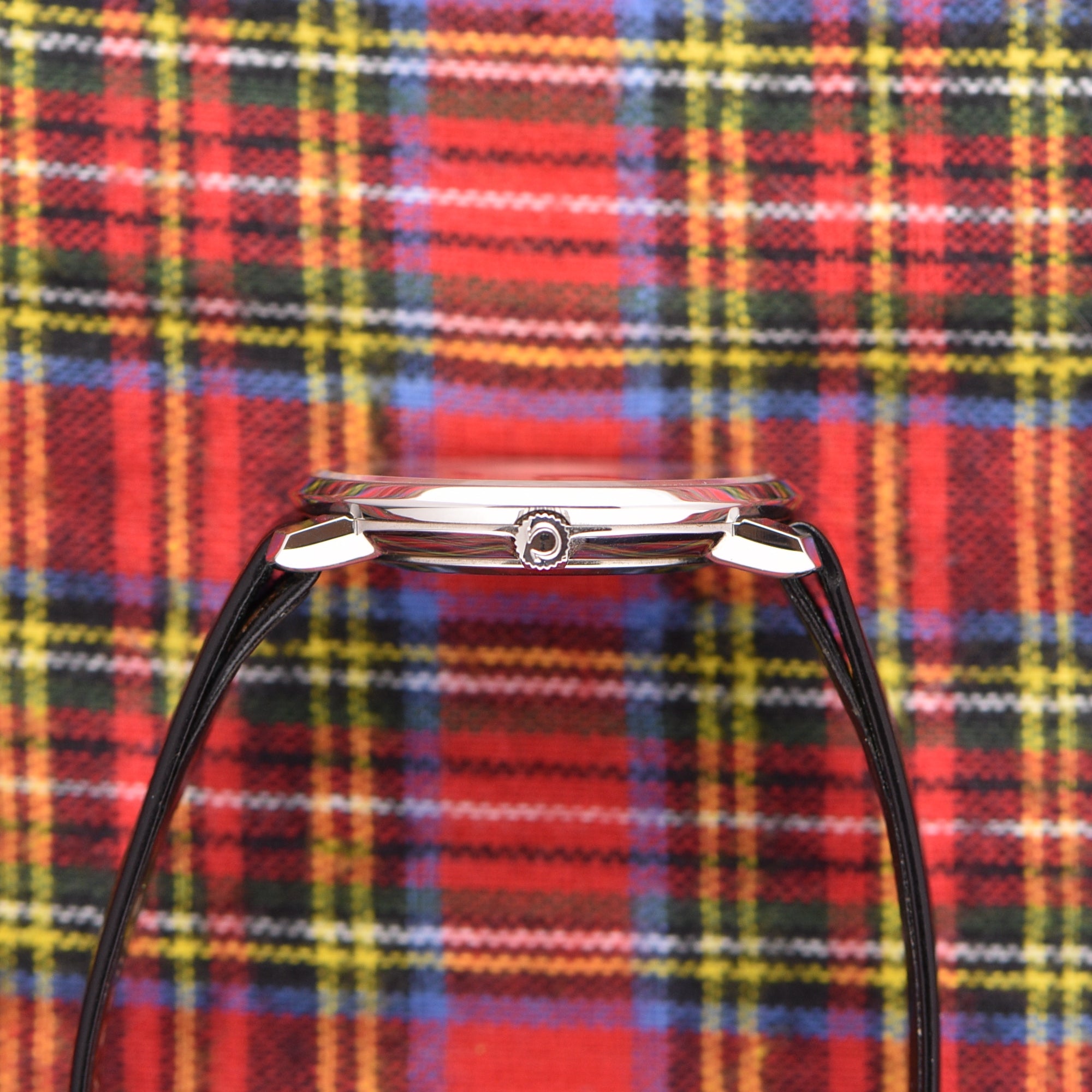
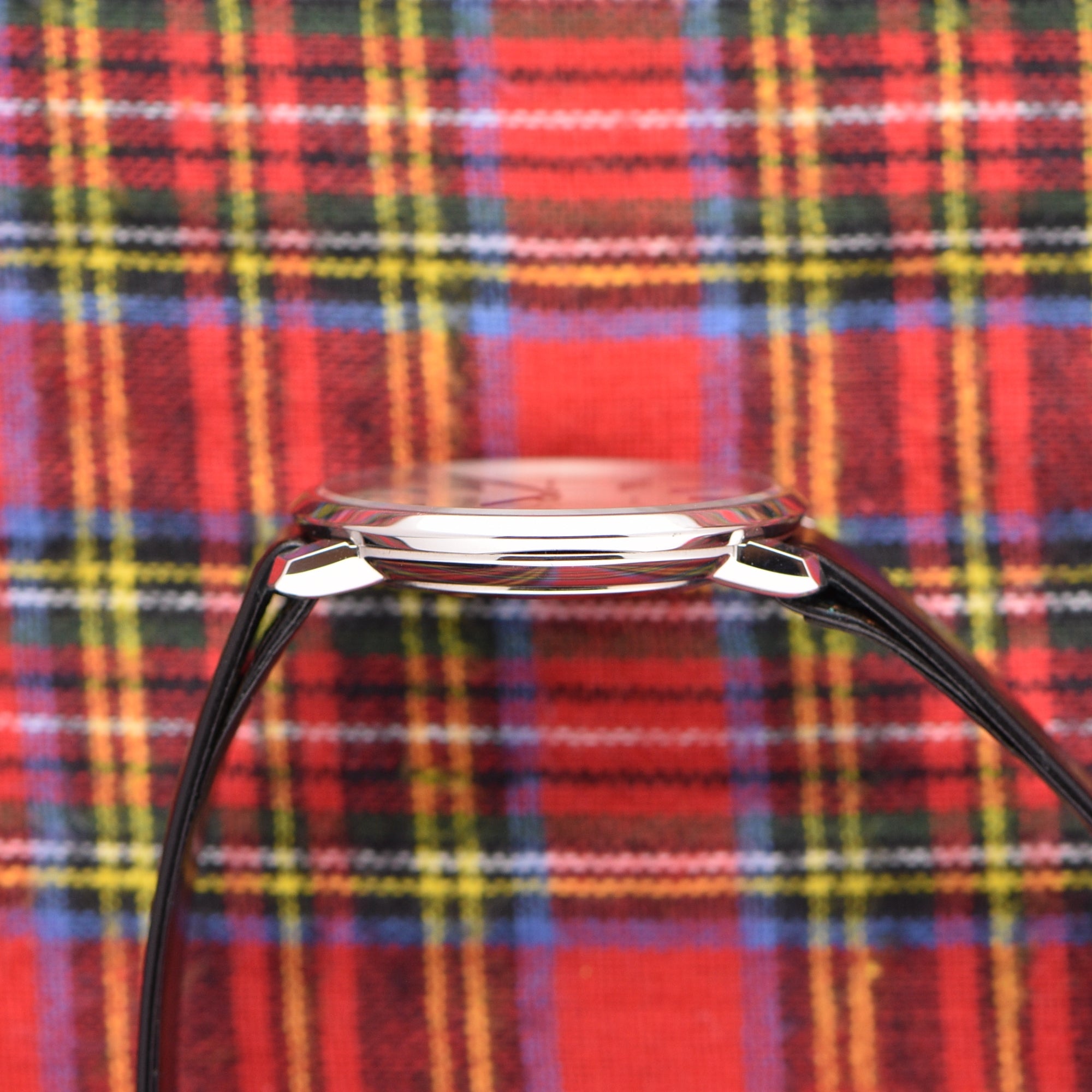

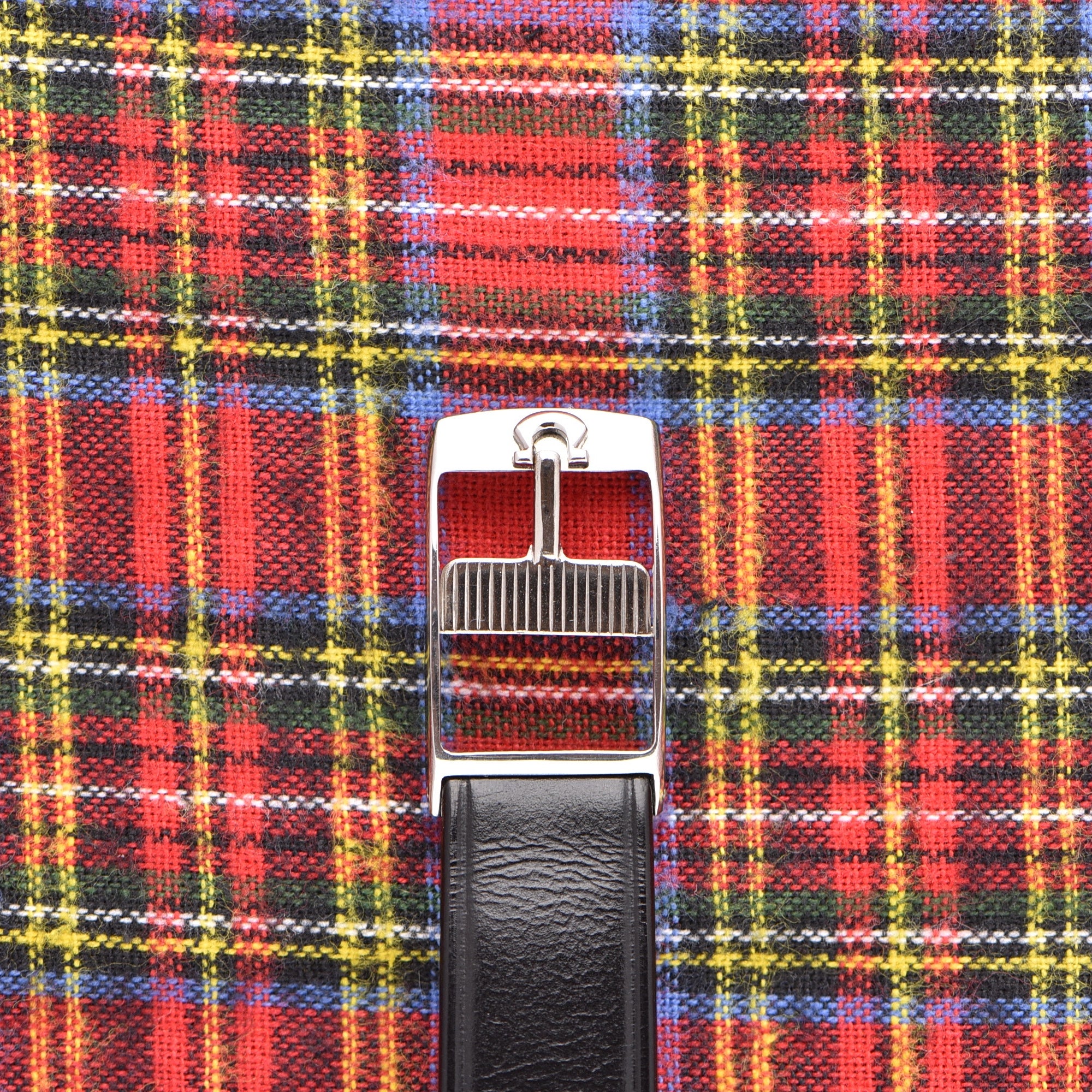
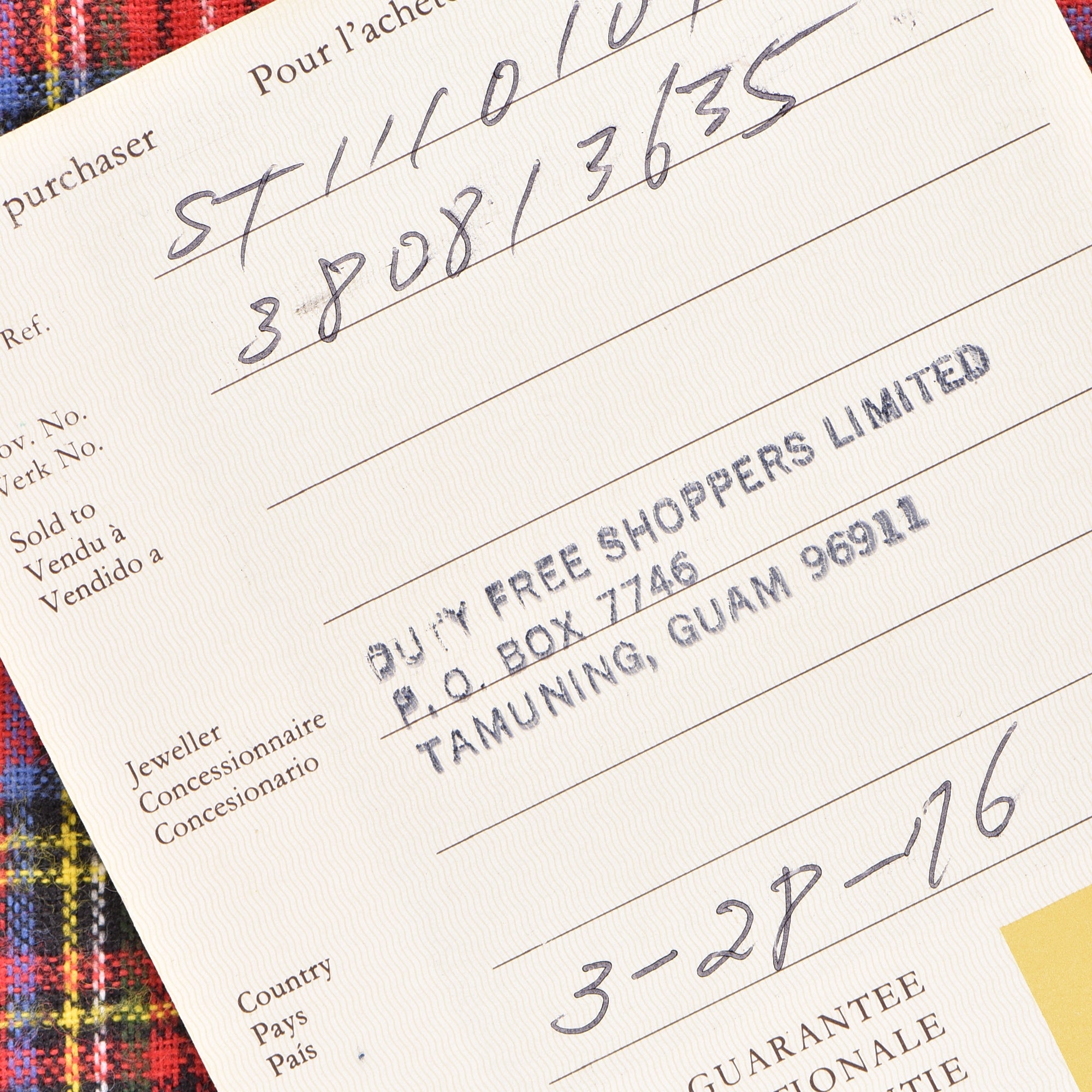
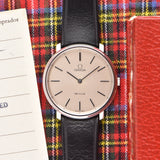
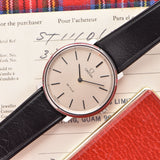
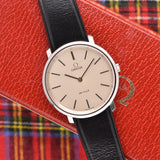
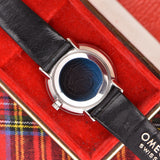
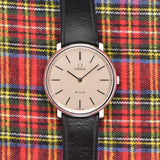
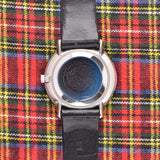
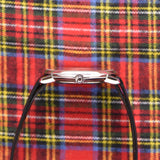
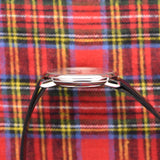
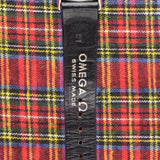
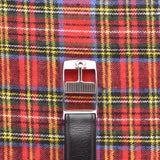
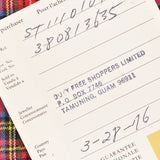
1976 Omega De Ville Brushed Dial - Box & Papers
- 111.0107
- Box, Papers, Strap, Buckle
- Specifications
- The Story
- The Brand
Year: 1976
Model: De Ville
Case Diameter: 33mm
Lug to Lug: 35mm
Case: Stainless Steel
Dial: Silver
Movement: Manual wind
Condition
A simple and clean case that looks unpolished. The sapphire crystal is also in great condition. The watch is in near N.O.S. condition
The De Ville concept was introduced in 1960 but wasn't officially recognized until 1963. In 1967, the De Ville became its own collection and page in the Omega catalog. The collection has been a great success, with sold-out stores and several design prices won during the 1970s.
The Pedigree for a DeVille watch is hard to tell by the looks, as today's DeVille line is set apart from the rest of the collections as the Bauhaus-esque option. However, during the 1960s and 70s, several watches from the Seamaster and Geneve collection did share quite some features or complete designs with the De Ville. The De Ville family has an identity now and overlaps well with the beginnings in the early 1960s. It is unclear whether the DeVille is a classic dress watch, a tool-dress watch hybrid, a playing ground for novel developments, an entry-level timepiece, or a high-end timepiece. Nonetheless, the De Ville line features some of the most fun vintage Omegas in the market.
Omega, a Swiss watchmaker founded in 1848, has a rich history of innovation and precision. The company's vision was carried on by its sons Louis-Paul and César, who pioneered full watch production under the brand's roof. In 1894, the company unveiled the world's first mass-produced, interchangeable watch movement, the Omega Calibre, which streamlined production and propelled the brand to international fame.
As the 20th century began, Omega watches became at the forefront of timekeeping technology and revolutionized sports watches with their precision. The Olympic Games provided an ideal stage for Omega to demonstrate its exceptional timekeeping abilities. In 1932, Omega began its role as Official Olympic Timekeeper, starting an enduring partnership spanning over 80 years. With each Games, Omega introduced groundbreaking timekeeping innovations, such as the first photo finish camera at the 1948 London Olympics.
Omega's contributions to spaceflight began in 1962 when the Omega Speedmaster became the first watch worn in space on Mercury-Atlas 6. Its defining moment came in 1969 with the Apollo 11 moon landing, where Buzz Aldrin stepped onto the moon wearing his trusty Omega Speedmaster Moonwatch. The company played an indispensable role in NASA's pioneering '60s space missions, including the Apollo 13 mission, where the Speedmaster timed the engine burn, ensuring the crew's safe descent to Earth.
Omega's cultural impact extends into pop culture through a long-running cinematic partnership with James Bond Movies. Since 1995's GoldenEye, James Bond has sported Omega watches on the silver screen, wearing the Seamaster Diver 300M and the rugged Omega Seamaster Planet Ocean.
Omega remains dedicated to exploring new technological frontiers today, with innovations like the battery-free Pictograms model, wearable tech collaborations, and energy-harnessing movements driving progress and cementing its place in history.
1976 Omega De Ville Brushed Dial - Box & Papers
Authenticity Guaranteed
All our watches are carefully inspected to insure and guarantee the authenticity.
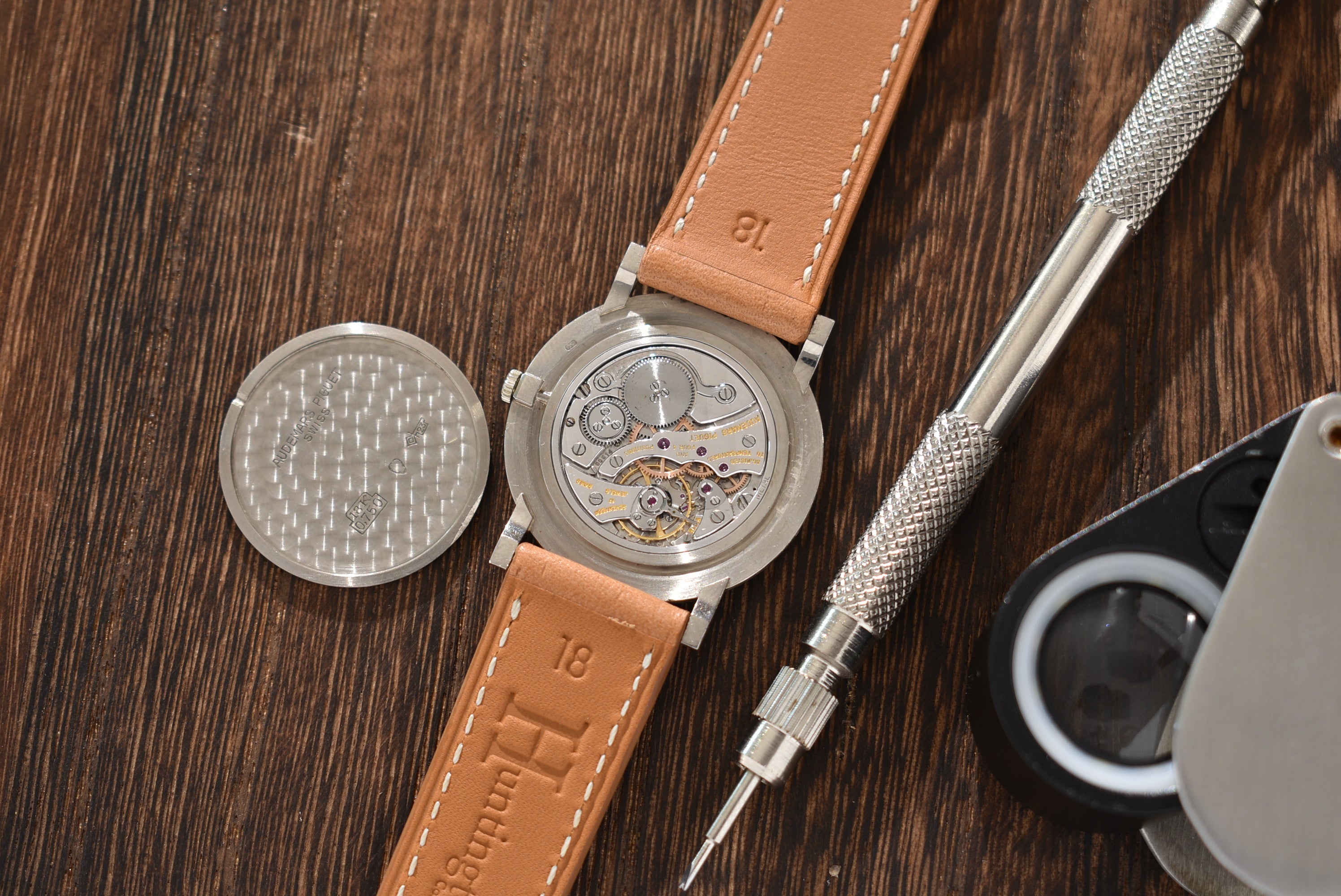

The Details
All our watches are scrutinized during inspection to make sure our descriptions are as accurate as possible.
- Related products
- Recently viewed
Cart
No more products available for purchase
Your Cart is Empty
Pair with
- 111.0107
- Box, Papers, Strap, Buckle
- Specifications
- The Story
- The Brand
Year: 1976
Model: De Ville
Case Diameter: 33mm
Lug to Lug: 35mm
Case: Stainless Steel
Dial: Silver
Movement: Manual wind
Condition
A simple and clean case that looks unpolished. The sapphire crystal is also in great condition. The watch is in near N.O.S. condition
The De Ville concept was introduced in 1960 but wasn't officially recognized until 1963. In 1967, the De Ville became its own collection and page in the Omega catalog. The collection has been a great success, with sold-out stores and several design prices won during the 1970s.
The Pedigree for a DeVille watch is hard to tell by the looks, as today's DeVille line is set apart from the rest of the collections as the Bauhaus-esque option. However, during the 1960s and 70s, several watches from the Seamaster and Geneve collection did share quite some features or complete designs with the De Ville. The De Ville family has an identity now and overlaps well with the beginnings in the early 1960s. It is unclear whether the DeVille is a classic dress watch, a tool-dress watch hybrid, a playing ground for novel developments, an entry-level timepiece, or a high-end timepiece. Nonetheless, the De Ville line features some of the most fun vintage Omegas in the market.
Omega, a Swiss watchmaker founded in 1848, has a rich history of innovation and precision. The company's vision was carried on by its sons Louis-Paul and César, who pioneered full watch production under the brand's roof. In 1894, the company unveiled the world's first mass-produced, interchangeable watch movement, the Omega Calibre, which streamlined production and propelled the brand to international fame.
As the 20th century began, Omega watches became at the forefront of timekeeping technology and revolutionized sports watches with their precision. The Olympic Games provided an ideal stage for Omega to demonstrate its exceptional timekeeping abilities. In 1932, Omega began its role as Official Olympic Timekeeper, starting an enduring partnership spanning over 80 years. With each Games, Omega introduced groundbreaking timekeeping innovations, such as the first photo finish camera at the 1948 London Olympics.
Omega's contributions to spaceflight began in 1962 when the Omega Speedmaster became the first watch worn in space on Mercury-Atlas 6. Its defining moment came in 1969 with the Apollo 11 moon landing, where Buzz Aldrin stepped onto the moon wearing his trusty Omega Speedmaster Moonwatch. The company played an indispensable role in NASA's pioneering '60s space missions, including the Apollo 13 mission, where the Speedmaster timed the engine burn, ensuring the crew's safe descent to Earth.
Omega's cultural impact extends into pop culture through a long-running cinematic partnership with James Bond Movies. Since 1995's GoldenEye, James Bond has sported Omega watches on the silver screen, wearing the Seamaster Diver 300M and the rugged Omega Seamaster Planet Ocean.
Omega remains dedicated to exploring new technological frontiers today, with innovations like the battery-free Pictograms model, wearable tech collaborations, and energy-harnessing movements driving progress and cementing its place in history.
